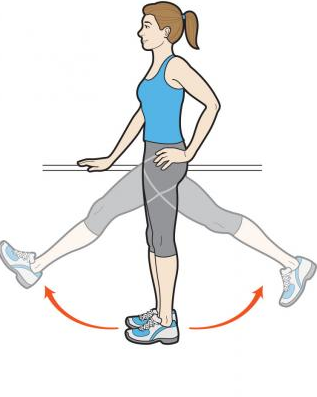Humans are really adaptable, so once we have been doing anything for a period of time we very easily adapt to that and are bodies’ feel that this is the norm. This applies to exercise or lack of exercise.
As we get older and spend more and more time sitting we become stiffer, especially around the waist, bum, lower back and upper hamstrings (back of the legs) areas of are bodies. As car manufactures recommend that when you start up your car first thing in the morning that you don’t immediately try and drive it at 100mph we have to let the oil circulate around the engine, the same applies to are bodies we can’t expect to go from doing nothing to full on exercises without first preparingfor what your about to do.
What is a warm up? A warm up is to prepare the body for the exercise that it is going to undertake. A warm up for a run should involve 3-4 minutes of light exercise to raise the heart rate (to get the blood flowing around the muscles) this can be anything from a quick walk to a light run and depending on how fast you intend to perform your run at. You then need too dynamically stretch the muscles you are going to use. Dynamic stretches are movement stretches, a good way to do this is to start at the top of the body and work your way down, each exercise should be performed 5-10 times, example of these stretches are:- Straight arm swings, rotating both arms together backwards and then forwards. Rotating the hips as if using a hula hoop, keeping feet approximately shoulder width apart performing in both directions. Rotating the upper body round to make as big a circles as possible –keeping your legs straight stretching up and then rotating in circles to try and touch the ground, both directions. Leg swings against a wall (using the wall for balance) swing one leg forward and back trying to keep the top half of your body as still as possible, and engage your core. (example below)

Now you are ready to start your training! Whatever your level of fitness is its important that you try and keep progressing your exercise, as mentioned before the body is very adaptable so we need to continue to challenge ourselves otherwise the saying “The height of insanity is doing the same thing but expecting different results”.
You can use the FIT principles to help your training:
F – Frequency (how often you exercise)
I – Intensity (distance, speed)
T – Time (time exercising, time of repetitions)
So whether you are able to run or just starting out and able to run / walk, keep a note of what you do so that you can increase the time you are running and reduce the time your walking, also increase the time or speed that you are running each time so that you can progress this leading up to the Run Together 5K.
What is a Cool Down?
A cool down is to lower the heart rate and to restore the body back to its resting state. Once you have finished your training you need do some restorative stretching, known as static stretches – focusing on the calf, hamstring, quad muscles (examples below) you should hold these stretches for approximately 30-40sec each. This will help with DOMS (delayed onset muscle soreness) that you get after exercise.
